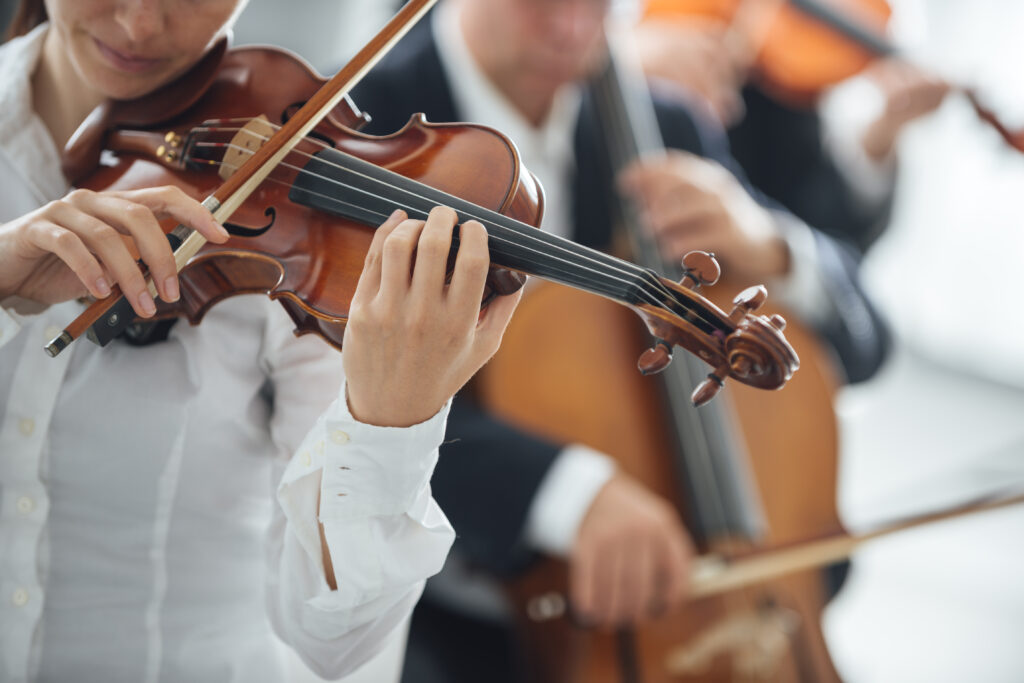The violin is a beautiful and versatile instrument that has captured the hearts of music enthusiasts for centuries. The sweet melodies that emanate from the strings can be enchanting, but for those who play the violin, it often comes at a price – neck pain. Violinists, both beginners and professionals, are no strangers to the discomfort and strain that can result from hours of practice and performance. In this blog post, we’ll delve into the reasons why violinists frequently experience neck pain and offer some strategies to alleviate it.
- Holding the Violin
One of the primary reasons violinists experience neck pain is the way they hold the instrument. The violin is held against the neck and chin while supported by the shoulder, and this positioning can lead to tension and discomfort. The weight of the violin, along with maintaining a stable grip, can create undue pressure on the neck, resulting in soreness over time.
- Poor Posture
Proper posture is crucial for playing the violin comfortably and without strain. When a violinist’s posture is incorrect, it can lead to neck pain. Poor posture may include hunching the shoulders, jutting the chin forward, or raising the shoulder that supports the violin, all of which can cause undue stress on the neck muscles and spine.
- Tension in the Neck and Shoulder Muscles
Playing the violin requires precision and control, which can lead to tension in the neck and shoulder muscles. The continuous use of these muscles while maintaining the proper posture can lead to fatigue and discomfort, which, if left unchecked, can escalate to chronic neck pain.
- Repetitive Motion
The repetitive motions involved in playing the violin can contribute to neck pain. The constant use of the same muscles and neck positions during practice and performances can result in overuse injuries, which may manifest as neck pain and discomfort.
- The Weight of the Violin
The weight of the violin itself can be a contributing factor to neck pain. Many modern violins are made of dense wood and have added accessories like chin rests and shoulder rests that can increase the overall weight. The constant support of this weight on the neck and shoulder can lead to strain over time.
- Lack of Rest and Stretching
Violinists often practice for extended periods without taking proper breaks or incorporating stretching exercises into their routine. Neglecting rest and stretching can exacerbate neck pain and other musculoskeletal issues.
How to Alleviate Neck Pain
Fortunately, there are strategies that violinists can employ to alleviate neck pain and promote overall well-being:
- Correct Posture: Ensuring proper posture while playing the violin is essential. Maintain an upright stance, relax the shoulders, and hold the violin without excessive pressure on the neck.
- Ergonomic Accessories: Invest in ergonomic accessories such as shoulder rests and chin rests that are designed for comfort and support. These can distribute the weight of the violin more evenly and reduce strain.
- Take Regular Breaks: Don’t forget to take short breaks during practice and performances to stretch and relax your neck and shoulder muscles. Gentle neck stretches and shoulder rolls can be beneficial.
- Warm-Up Exercises: Incorporate warm-up exercises into your practice routine to prepare your muscles for the demands of playing the violin.
- Seek Professional Guidance: Consult with a qualified violin teacher or a physical therapist who can provide guidance on proper technique and exercises to prevent and alleviate neck pain.
Neck pain is a common challenge for violinists due to the unique demands of playing this beautiful instrument. However, by paying attention to posture, using ergonomic accessories, and incorporating proper warm-up and stretching routines, violinists can reduce the risk of neck pain and continue to create enchanting music. The key to a pain-free musical journey is understanding the potential causes of discomfort and taking proactive measures to address them, ensuring that the violin remains an instrument of joy rather than a source of pain.




